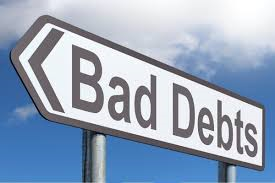Posts Categorized: Tax
How can I claim car travel?
In order to claim car travel in your personal Tax Return:-
-
You must own the car.
-
You must have undertaken a trip for either your business or your employer.
You can claim under two methods:-
-
Log book, or
-
Cents per kilometre
Tip
You can use a log book kept for three months in the current year or in the last four years (provided the pattern of travel hasn’t changed significantly).
Tip
You must have a properly kept log book. You can do so by buying one in a stationers or you can access an electronic one form our firms app.
Tip
You can claim 68 cents per kilometre under the cents per kilometre method for up to 5,000 work/business strips. This means you can still claim 5,000 km where you travel say 5,500km. Some people choose to do so as it gives them a better claim than under a log book. All you need is a reliable estimate of all trips undertaken during the year.
Want to know what works best for you – call us. We even have a salary sacrifice calculator so we work out the best way to package up a work car and minimise the Fringe Benefits Tax.
SMSF investment strategies
Last month, the ATO wrote to 17,700 self managed super funds (SMSFs) trustees and threatened fines of up to $4,200. The letters were sent to trustees where their SMSF had more than 90% of its assets in one asset class.
It has now come to light that the vast majority of those letters went to those funds where property was the main asset and there was a limited recourse borrowing arrangement (permissible borrowing with super).
The point remains though there is nothing wrong with borrowing nor buying a property within a SMSF. Both are permissible (as long as all relevant requirements are satisfied).
This includes documenting your decisions to do so within an Investment Strategy.
The only thing that appears to have changed is that the ATO has now re-defined a 23 year old requirement and are now expecting trustees to document the decision why you have decided to do so.
Accountants can’t advise on where you should invest your super (they can only provide a template for you to fill in and complete). If you need assistance with the process and/or want to know the long term ramifications of your strategy (and options) then you should speak to a financial planner.
When can I claim a bad debt as a tax deduction?

When can I claim a bad debt as a tax deduction?
You have to satisfy a few conditions:-
-
There must have been an enforceable sale.
-
All reasonable attempts have been made to collect it.
-
The decision to write off it off is evidenced in writing.
-
The customer hasn’t already gone into liquidation or you haven’ t accepted a deal to be paid only x cents in the dollar.
That all said, if you declare income on a cash basis then there is no deduction to be claimed for a bad debt as there wasn’t any taxable income in the first place.
So how do you avoid the cost of a bad debt? Look out for future blogs including what the real costs of a bad debt can be.
Or better yet, ask us.
We have dozens and dozens of ideas and strategies from dealing with hundreds of clients from many different industries.
Share trader or share investor

Are you a share trader or share investor?
It’s an important distinction as it can make a world of difference.
Both declare dividends as income (with a tax credit for any imputation/franking credits). However:-
-
A share investor is assessed on realised gains (i.e. when a share is sold). Only 50% of the gain is assessed if the share is held for more than 12 months. No deduction is available for realised losses; they can only be offset against capital gains.
-
A share trader is assessed on both realised and unrealised gains (and losses). The cost of shares bought are deducted as purchases, the sales treated as income and the value of shares at 30th June is treated as closing stock (and therefore income).
So are you a share trader?
Well that depends on matter such as:-
-
The amount invested.
-
The frequency of trades.
-
The amount of trades.
-
Whether it is being carried on in a business like manner. In this regard, the ATO always places great weight on the existence of a business plan.
-
Time and money spent on research.
-
The sophistication of the operation including software programs.
It must also be said that the ATO take particular interest in taxpayers who change from one status to the other. Particularly so in years where there are large market movements.
Not sure where you sit?
The ATO has a useful short summary at https://tinyurl.com/y3s8nure
We would be happy to discuss your situation at greater length with you.
Income splitting

Income splitting refers to ensuring income is legally earned by a partner or family member and taxed at their lower tax rate.
In respect of share investments, we often find that new clients have done that.
It often surprises me though, indeed just as it is with a new client, how often the high income earner has all the bank accounts and term deposits earning interest in their own name. Having such accounts in joint names is half as bad. The tax burden would be a lot less if held in the name of the spouse name on the lower marginal tax rate (and almost always will still be treated as a joint asset for family law purposes). Same income, better tax result.

Negatively geared properties however require detailed consideration. Negative gearing refers to the situation where the interest and other expenses incurred on an investment exceed the income from that investment. The tax break on negative gearing often dictates that the investment be made in the name of the high income earner. That said, with the 10 year bond yield under 1%, interest aren’t going up in a hurry – which means that properties become more quickly positively geared than they have in recent years. In other words, getting a tax break doesn’t last for that long and actually becomes a tax problem relatively quickly.
The other factor for consideration is when will the property be sold.
If in retirement, the tax burden may be low; if whilst working the tax could be eye watering.
We welcome any tax question you may have.
Last minute tax planning tips
With 30th June fast approaching, here is a list of common tax planning strategies that we have been discussing with clients:-
- Prepaid revenue can be deferred to the extent that it relates to next financial year and where a customer has the contractual right to cancel the contract at any time.
- Buying items such as stationery, printer cartridges, stamps, etc by Sunday 30th June. Those of you who entered the Simplified Tax System (STS) by 30th June 2005 (who are therefore automatically assessed on a cash basis) may wish to pay any bills not due until July like your phone bill, rent, printing and stationery, etc. Paying your accounting fees is also recommended!
- STS taxpayers are now known as Small Business Taxpayers (SBTs). SBTs now include taxpayers with an annual turnover under $10,000,000. As we have previously highlighted, SBTs can claim a full deduction for any assets acquired costing less than $30,000 excluding GST – but note lower limits of $20,000 for assets bought before 29th Jan and $25,000 before 2nd April.
- The $30,000 limit will apply to assets bought ad installed rady for use by 30th June 2020.
- The $30,000 asset write off has also been granted to businesses with annual turnover up to $50,000,000.
- SBT taxpayers can claim half a year’s depreciation on acquired assets that cost more $30,000 – even if the asset is purchased on the last day of the year. If a business owner buys a business asset costing $40,000 today, then they get to claim depreciation of $6,000 in this financial year followed by $10,200 in 2019/20. Buy that same asset in July 2019 and the claim by 30th June 2020 is only $6,000.
- For more on the instant asset write-off, refer to recent blogs titled Parts 1, 2 and 3.
- SBT taxpayers can also claim a full deduction for payments such as insurances, rent and the like which cost more than $1,000 even though the service period runs past 30th June and into the next financial year.
- For those of you who receive this e-mail that are employees or rental property owners, you can claim a complete write off for assets costing less than $300.
- If a property is jointly owned, then you can claim the full cost of assets costing less than $600 (meaning you claim less than the $300 limit each).
- Investors can claim prepayments in full. An investor with a property or share loan can claim a deduction for 12 months prepaid interest. Please note that the ATO requires that for the prepayment to be claimed, one must benefit through a lower interest rate (for which you need to keep proof).
- For those who have already generated a large capital gain, consideration should be given to selling other investments that have an unrealised capital loss. Those with no or minimal employer SGC support should consider making a deductible contribution into superannuation to offset the tax on the capital gain (but speak to a financial planner first).
- If you are about to sell an asset which will generate a capital gain, consideration should be given to selling it after 30th June. This will defer the payment of any capital gains tax liability until after 30th June 2019.
- Companies can accrue a director’s fee which is not payable until the following financial year. Why? – the company gets a deduction in this financial year but the director is not assessed on the income until the following financial year in which it is received. The trick is to document it correctly.
- If you have stock, count it (a separate e-mail will be sent to business clients with stock). As stock can legally be valued differently from item to item and from year to year, it can result in some advantageous outcomes.
- Donations are deductible. It must be a genuine donation so you can’t receive anything in return. Raffle tickets can’t be claimed.
- Our tax planning checklist also considers other items such as writing off bad debts, making Division 7A loan repayments, distributing to a new beneficiary, varing PAYG Instalments, super rule changes that you may benefit from (after receiving financial planning advice) valuing stock by using costs or net realisable selling method. How these and other opportunities are employed depends on your circumstances.
All of the above tax planning tips are explained to our clients in any easy to read Tax Planning Report.
We welcome any query about these tax planning tips but also in respect of your preparation for Singe Touch Payroll (for which our clients have been receiving weekly preparatory updates ahead of the start date of 1st July 2019).
$30000 asset write-off limit
So what if you want to buy an asset costing more than $30,000 (ex GST)?
Well as a small business, you will be able to claim 15% depreciation on the cost of the asset. So a $50,000 asset bought today will still generate a $7,500 tax deduction in the 2019 tax year (and $12,750 next year).
Buy the same asset on say 7th July, and your claim for next year is only $7,500.
And you still may be able to write-off the balance in the 2020 year for an asset costing more than $30,000. The $30,000 limit also applies to the undepreciated pool balance. We had one client buy a vehicle for $35,000. Come July 1 2019, the pool balance will be $27,500 (as that is the only asset they are depreciating). They can write off the balance of the car in the 2019/20 year.
Please refer to our three part series of 21 tips and traps for the instant asset write-off. Or better yet, call us on 9899-7511 to discuss your situation and opportunities.
STP – changes at the top
It came as a personal surprise to see that the super impressive head of Single Touch Payroll (STP) at the ATO resigned on Friday. He has done so just two weeks before some 700,000+/- small businesses are required to report wages at the time of payment.
What are we to make of that?
As of two weeks ago, not even 120,000 businesses in the country were registered for STP. One can only therefore conclude that the vast majority businesses will not be ready for STP come 1st July. That is just 2 weeks from today.
In part, this is not really surprising. STP is the biggest operational change since GST. Moreover, it relies heavily on public accountants being able to help all of their clients. And the reality is that the majority of public accountants haven’t been able to meet their 2018 tax lodgement program and are drowning in overdue Tax Returns. They simply don’t have the time and resources to support what is required to implement STP.
At Maggs Reid Stewart, we are progressively taking our clients through a series of weekly preparatory tasks. And as part of this process, we are guiding clients to clean up their HR systems.
If you are struggling with STP and/or your accountant is not helping you, then please call us. And do so today because this is not something you can attend to on the first pay day in July.
Super contribution warning
A quick super contribution warning.
In order to claim a tax deduction for a personal or employer super contribution, it must be paid by year end.
This year is a bit of a trap with June 30 falling on a Sunday.
Another trap is that I just read that the ATO’s own employer super clearing house requires payment to be made by the close of business on Monday 24th June. Pay later than that and the contribution will go into the next financial year. That’s a real problem if you have retired and are aged over 65 as you will thereby breach the work test rule in the first week of July 2019.
Some clearing houses and super funds close off earlier than the 24th. Make sure you now what you cut-off dates are.
$30,000 asset write-off – Part 3 of 3
In our last of three blogs, we look at another 7 tips and traps in respect of claiming the $30,000 instant asset write-off.
- You can only claim the business portion on an asset that is used both for business and privately – such as a car or lap-top.
- That said, one can deduct the whole cost of cars provided the Fringe Benefit Statutory Formula method.
- If your business has current or carried forward losses in excess of your intended asset purchase(s), then your business will not gain any tax saving in this financial year.
- The $30,000 threshold also applies to the written down value of the depreciable (general pool) assets. If their collective written down value is under $30,000 on 1st July 2019, then the balance can be claimed in full in the 2019/20 year. For 2018/19, the balance can only be written off if it was less than $20,000 on 1st July 2018.
- It’s assessed on an item by item basis – so a business can buy 50 computers and deduct the lot!
- I should point out that the threshold is due to fall back to $1,000 come 1st July 2020. They may not happen though as it has already been extended multiple times.
- If you are thinking of buying an asset under finance do so quickly. Post Royal Commission, it is far from easy as it once was to obtain finance. Moreover, the whole process is not as quick as it once was – which may mean you are not in possession of your asset by Friday 28th June. We hasten to add though that we can put you in contact with financiers. And beware of glitzy app based products as their rates tend to start above credit card rates.
Please time to read the other 14 useful tips and traps in Parts 1 & 2 of the $30,000 instant asset write-off. Or better yet, call us on 9899-7511 to discuss your particular situation.

